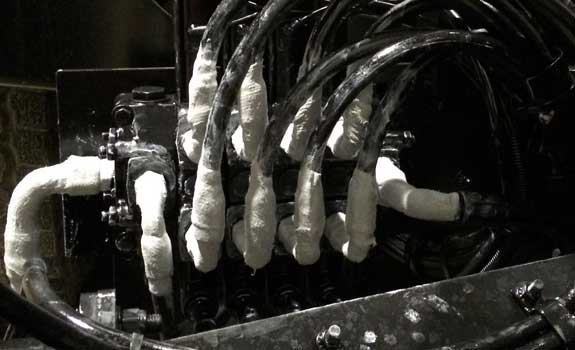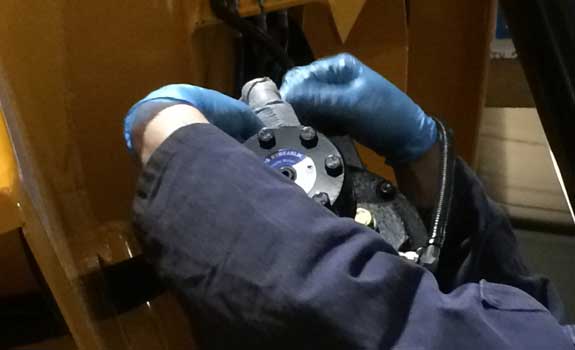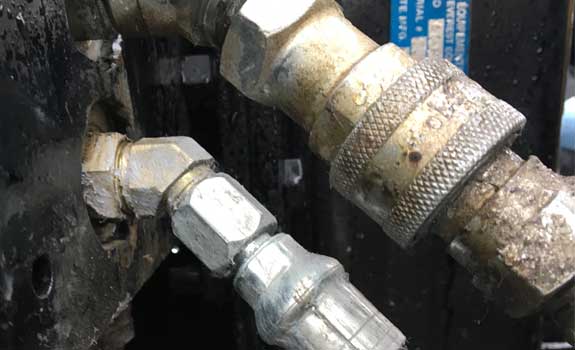CASE STUDY
Hydraulic Hose Fitting Corrosion Protection
Exposed Surface Coating
Project Data
| Location | Ontario, Canada |
| Completion | 2015 |
| Project Type | Hose and Fitting Protection |
| Products Used | Denso ColorTape 2" |
| Contractor or Applied By | Truck Builders & Maintenance Mechanics |
Project Details
In Ontario, Canada is faced with harsh winters and the necessity of aggressively salting the roads. With millions of pounds of salt and brine solution being sprayed over the course of a long winter season, the trucks that are tasked with the job pay a serious toll in the form of corrosion and electrical failure due to moisture infiltration. Corrosion of fittings results in hose failure and loss of control of hydraulic equipment, spilling of hydraulic fluids and danger to vehicles sharing the road as well as a substantial towing cost and vehicle downtime. Additionally, when attempting to change a hose if the fitting is seized, a huge amount of time and effort is required to uncouple the fitting as well as the possible necessity to change couplings and attached hoses because they cannot be separated. Finally, quick connections cannot be utilized if they are seized and electronic components such as sensors often have to be replaced prematurely due to failure related to corrosion or water infiltration.
To guard against these issues, many municipalities and private companies such as Carillion, Miller and BDI have now started using Denso ColorTape on fittings when replacing a hose as well as having it installed from new on all at risk fittings. This is done at the facilities of truck builders like Viking-Cives, Alliston Truck Equipment, Tenco, Gin-Cor and Northern Powertrain.
The benefit of Denso ColorTape is not limited only to winter applications. It is also often installed on equipment used for grass cutting, grading and other summer activities. With the high cost of equipment and the equally high cost of downtime, Denso ColorTape provides an inexpensive and proven solution in preventing failure due to corrosion and water infiltration.

Hydraulic hose fittings protected with Denso ColorTape against harsh weather conditions and water infiltration.

Denso ColorTape is easily applied by hand and requires no primer.

Denso ColorTape removed after 1 year (left fitting) vs one fitting (right fitting) that was not wrapped.

Hydraulic hose fittings protected with Denso ColorTape against harsh weather conditions and water infiltration.

Denso ColorTape is easily applied by hand and requires no primer.



